Greg O’s Garage: The first Automobile Publication; The Horseless Age Part 2
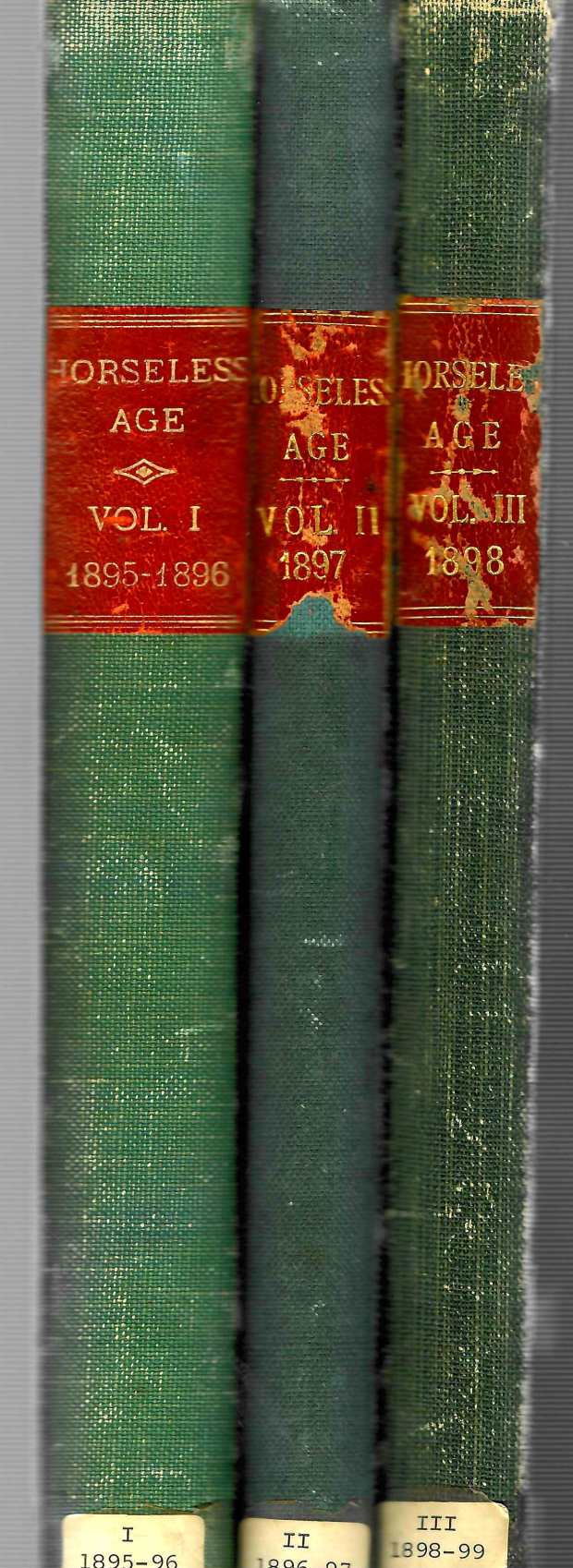
Part Two of a new series of posts examining the first American automotive publication, The Horseless Age.
Starting in 1895, The Horseless Age was created and started publishing monthly issues about the burgeoning automotive industry.
In this second of a series of posts we'll look at Volume 1, issue 3 of the first 12 issues contained in Volume 1 of the bound collection of 30 volumes.
Being this is from the earliest stages of motor carriage development in 1895, the amount of innovation and 'firsts' is staggering in the first volume alone.
Greg O.
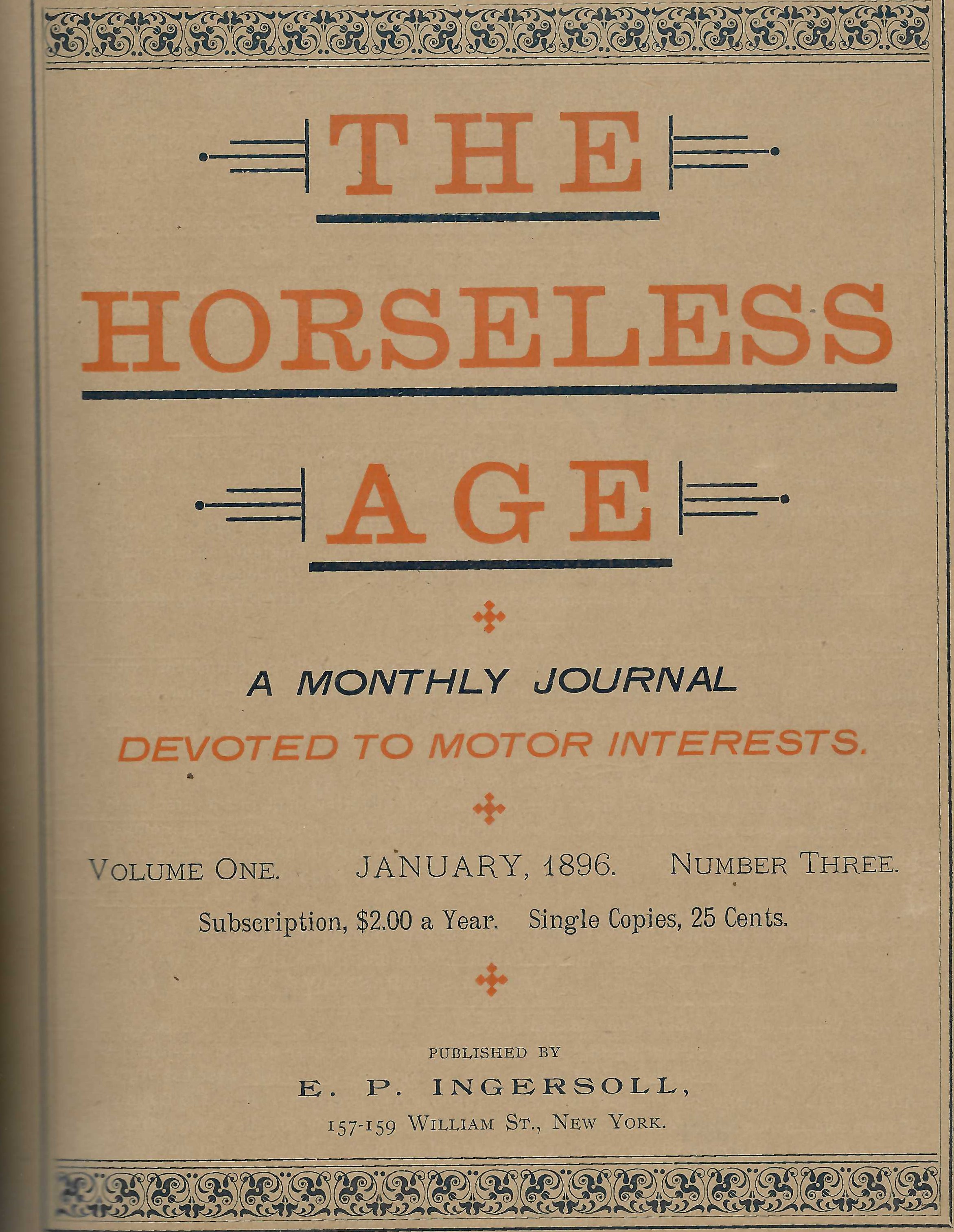
Part 2 starts with issue 3 from January of 1896.
What to call the new, motorized invention?
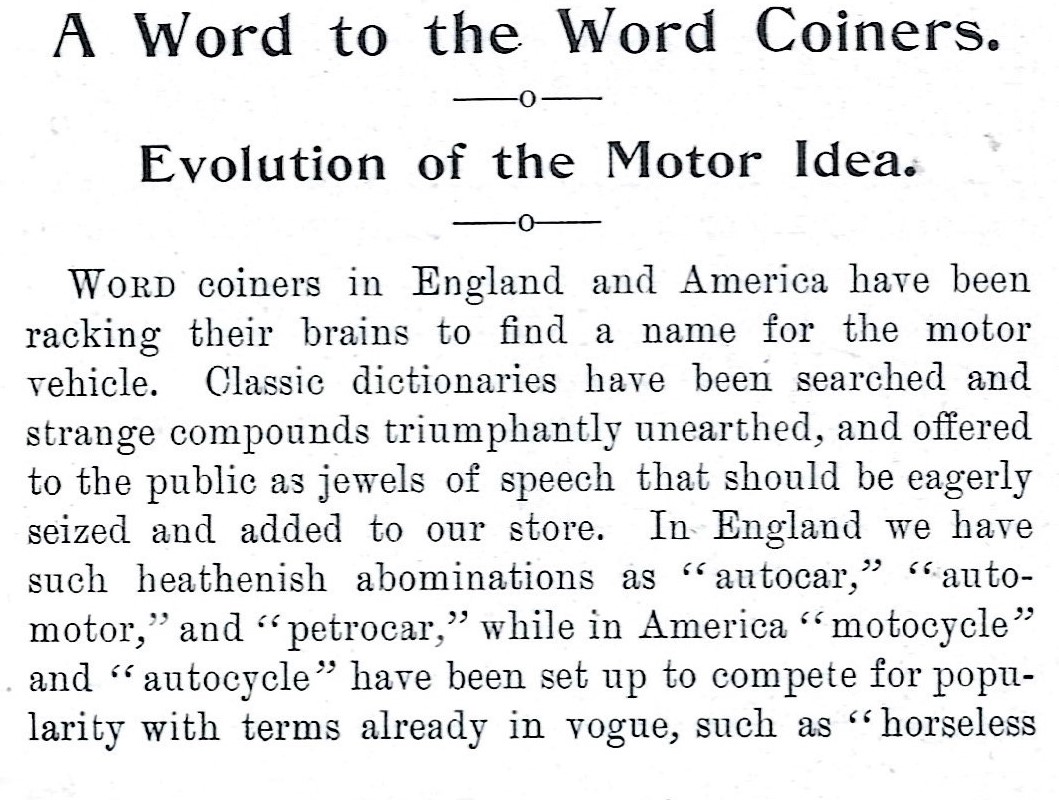
There was great debate as to what the proper term should be for the new inventions as the word 'automobile' hadn't even been coined yet.
As of 1895, in England, common terms were "automotor", "autocar" and "petrocar", while in the U.S., automobiles were more widely known as "horseless carriages" and "motor wagons" with "motocycle" and "autocycle" being used as well.
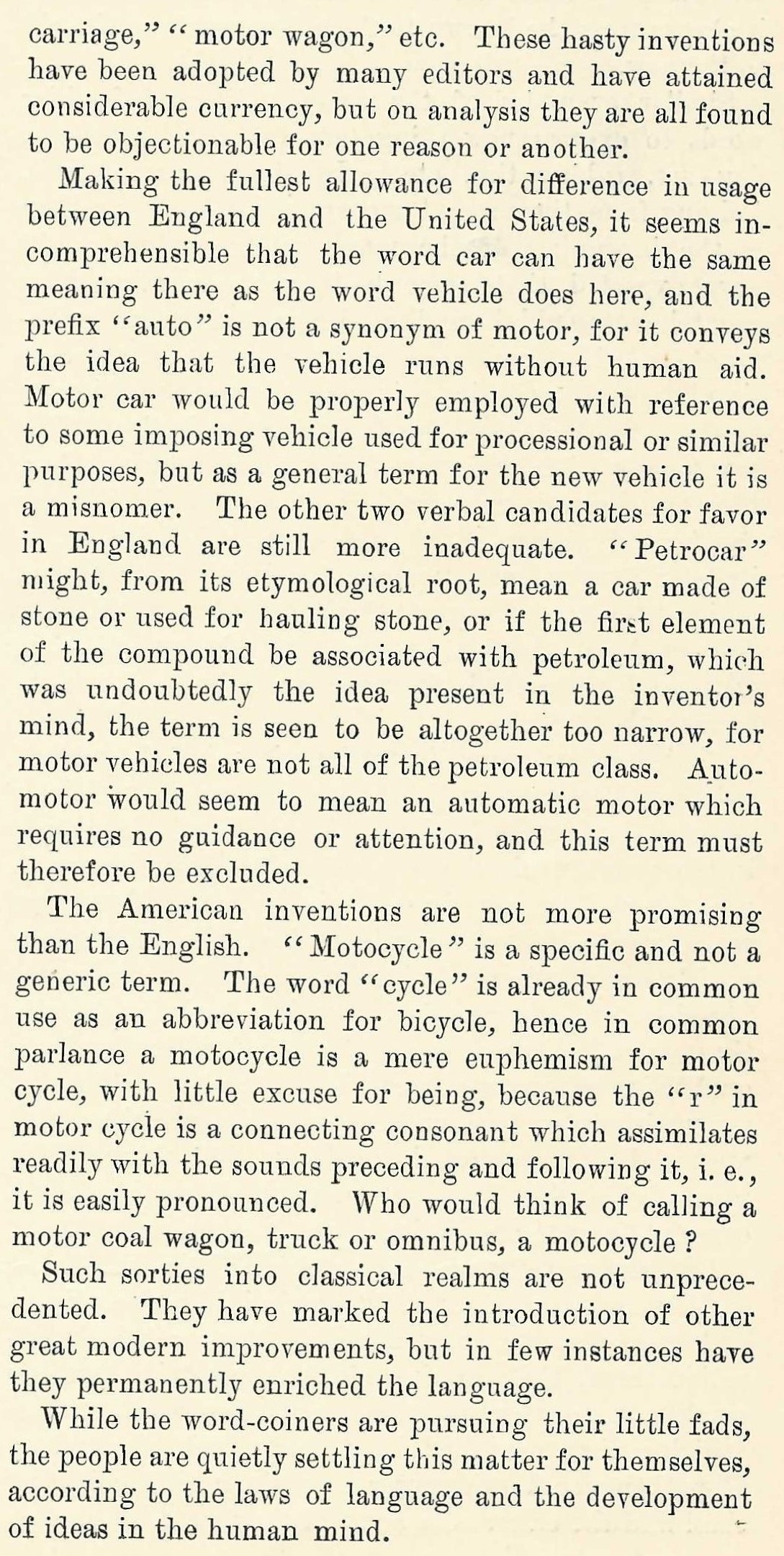
While these terms were sufficient for the moment, none seemed to be the proper terminology for what they should be called on a permanent basis.
For instance, the U.S. flatly rejected the English terms like "petrocar" as it being too narrow a term for automobiles being that there were many forms of motor propulsion like steam, electric and spring-loaded motors and 'petro' denotes only vehicles being run on gasoline. "Automotor" sounded like an 'automatic motor', and "autocar" seemed redundant.
The U.S. terminology wasn't much better as 'cycle' was already in use as an abbreviation of 'bicycle'.
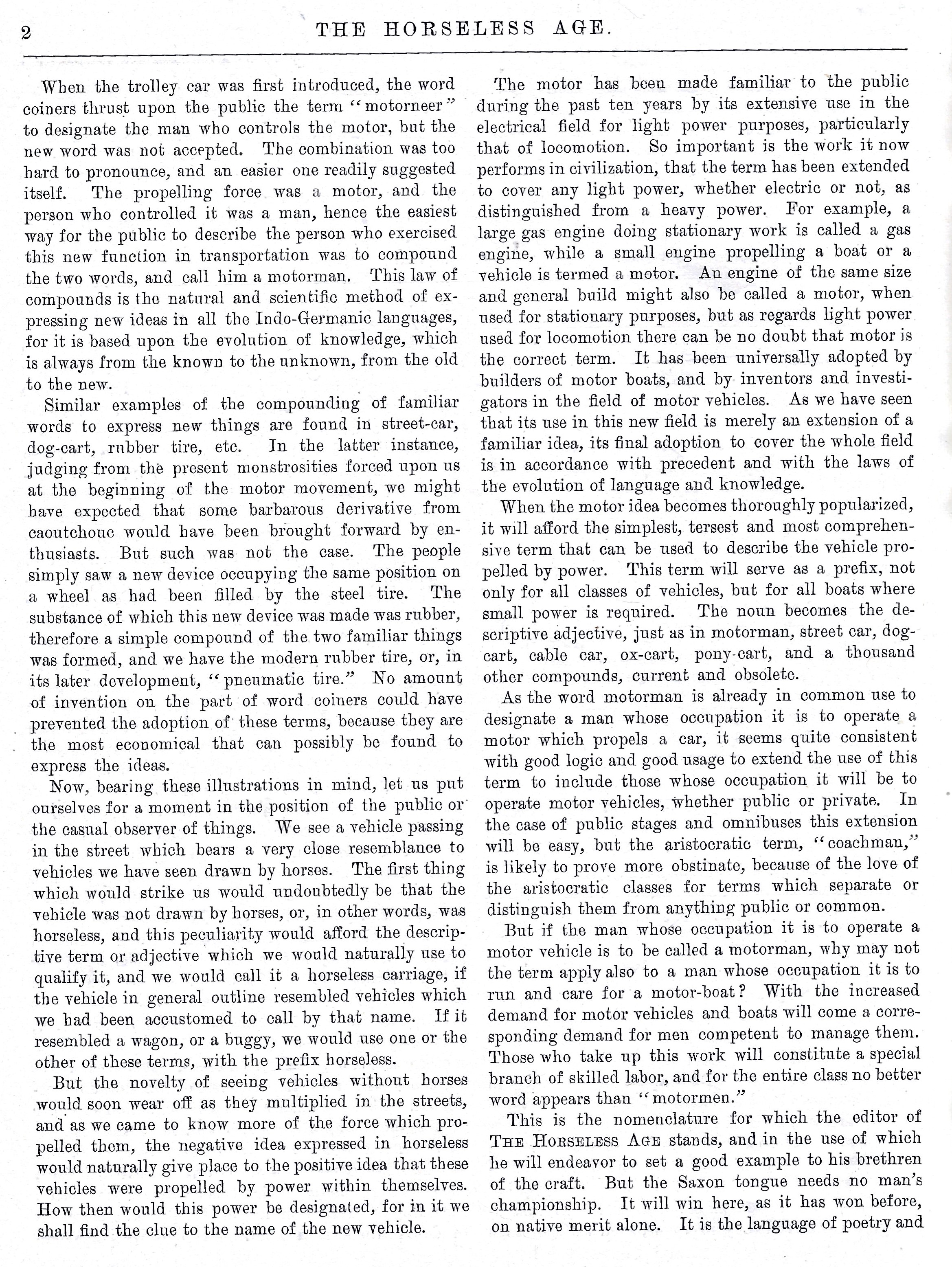
It was suggested that maybe a compound word would be suited for a term. "horseless carriage, buggy and wagon" seemed to be the logical name, but as the popularity increased of the new invention, the term 'horseless' would seem to take a negative connotation.
The prefix 'motor' followed by whatever type of vehicle it was installed, was the preferred "...nomenclature for which the editor of The Horseless Age stands, and in the use of which he will endeavor to set a good example to his brethren of the craft."
The debate continues for months....
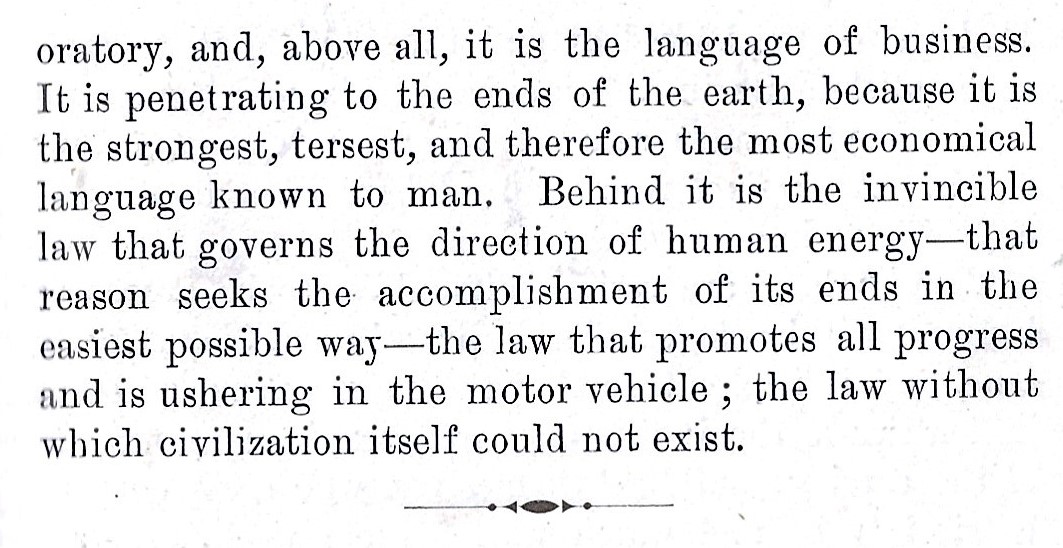
'Automobile' didn't come into vogue until later in the April 1896 issue number 6, but more on that later.
Thomas Edison's Thoughts
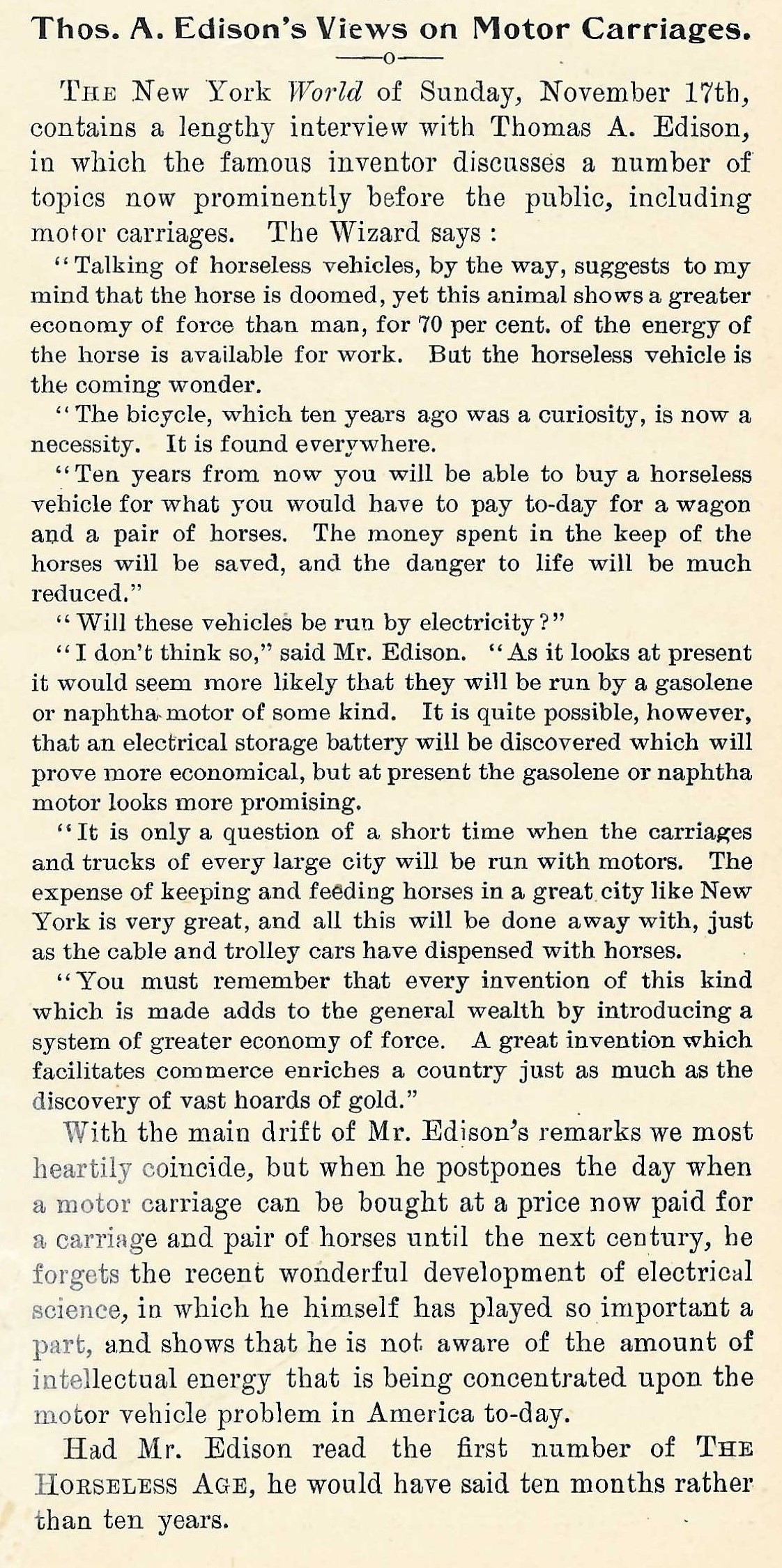
A very interesting article within the first issues is an interview with Thomas Edison himself and his views on the motor carriages of the day.
Partially reprinted to the Horseless Age from a New York World article on November 17th 1895, the Wizard of Menlo Park seems intrigued, and very positive, by the new motorized inventions saying "...the horseless vehicle is the coming wonder."
Edison also quoted; "The bicycle, which 10 years ago was a curiosity, is now a necessity...10 years from now you will be able to buy a horseless carriage for what you would have to pay today for a wagon and a pair of horses. The money spent in the keep of the horses will be saved and the danger to life will be greatly reduced."
When asked if the new vehicles will be run by electricity, his surprising answer was; "I don't think so." "As it looks at present it would seem more likely that they will be run by a gasoline or naphtha motor of some kind." although he concedes it may be "possible that an electrical storage battery will be discovered which will prove to be more economical, but at present the [gasoline] motor looks more promising."
A. L. Riker
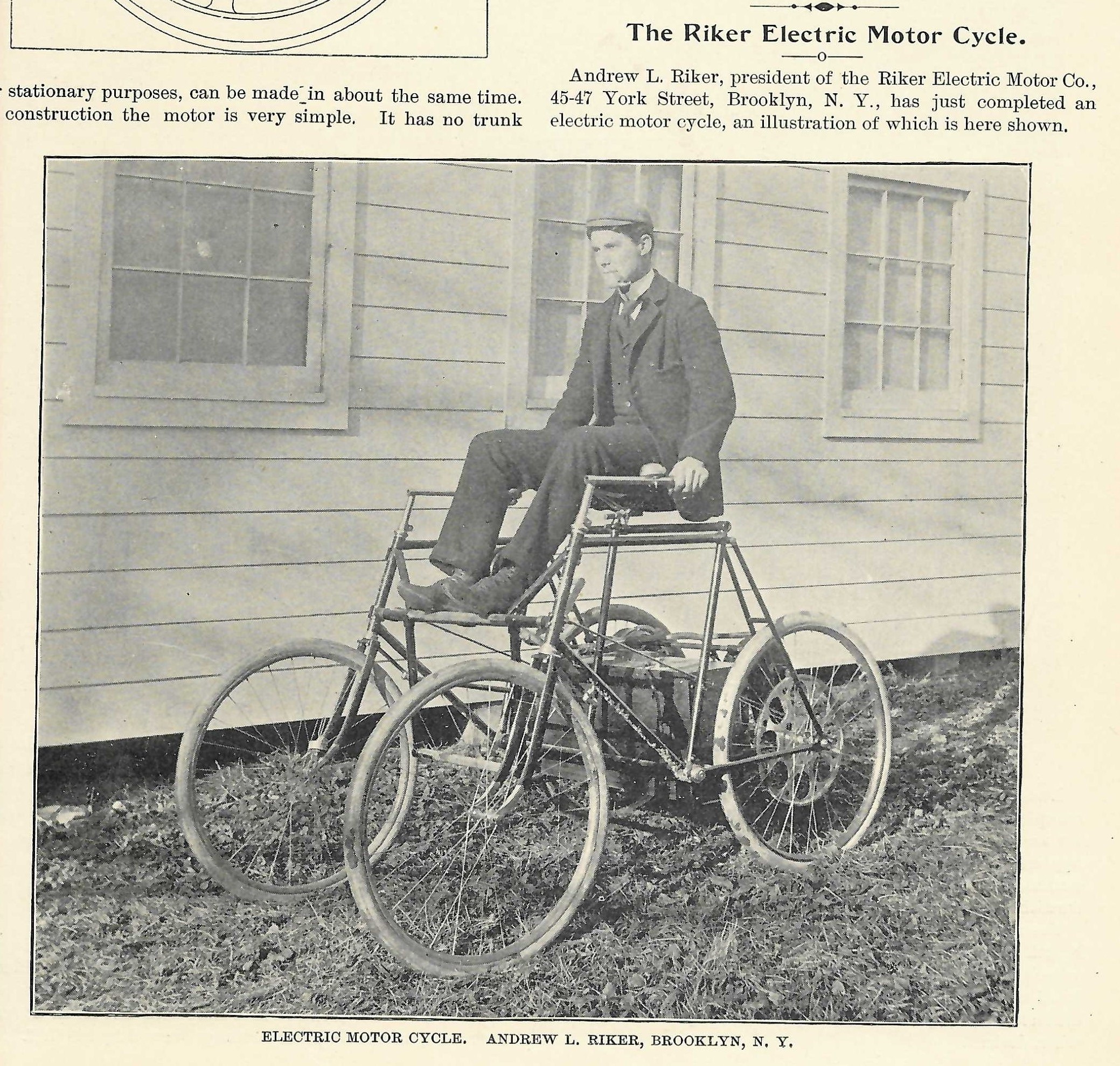
If you're very familiar with directors and important people of the Vanderbilt Cup races, you may recognize the young face of A. (Andrew) L. (Lawrence) Riker here in 1895, Riker was just inventing his first electric vehicle from the company he started, but eventually went to Locomobile as a designer, then Vice-President and treasurer of Locomobile.
Equally as odd as the Ames cycle of the Part 1 post is A.L. Riker's creation. But unlike Ames, Riker chose electric instead of steam as his form of propulsion.
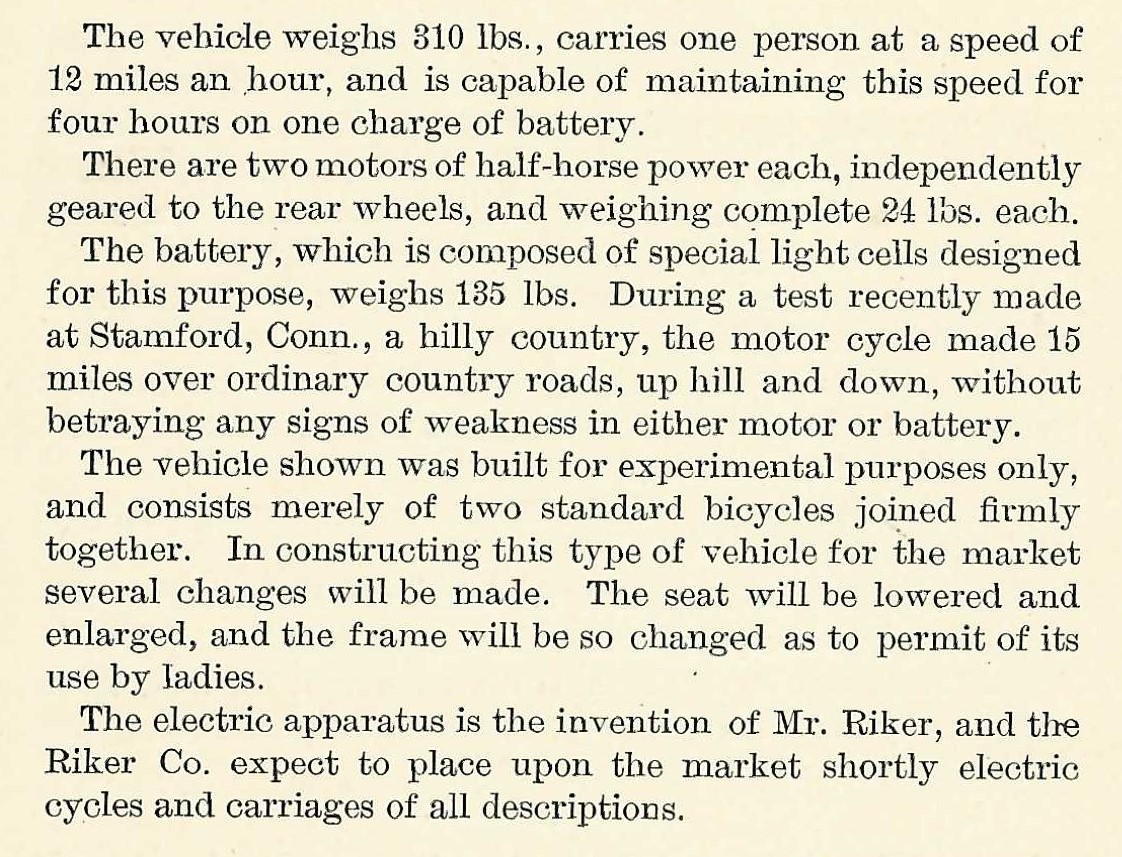
As described in the article, this vehicle was experimental and simply was 2 bicycles mated together with 2 electric motors. For the public market, it will eventually have a lower seat and modified frame "for the ladies."
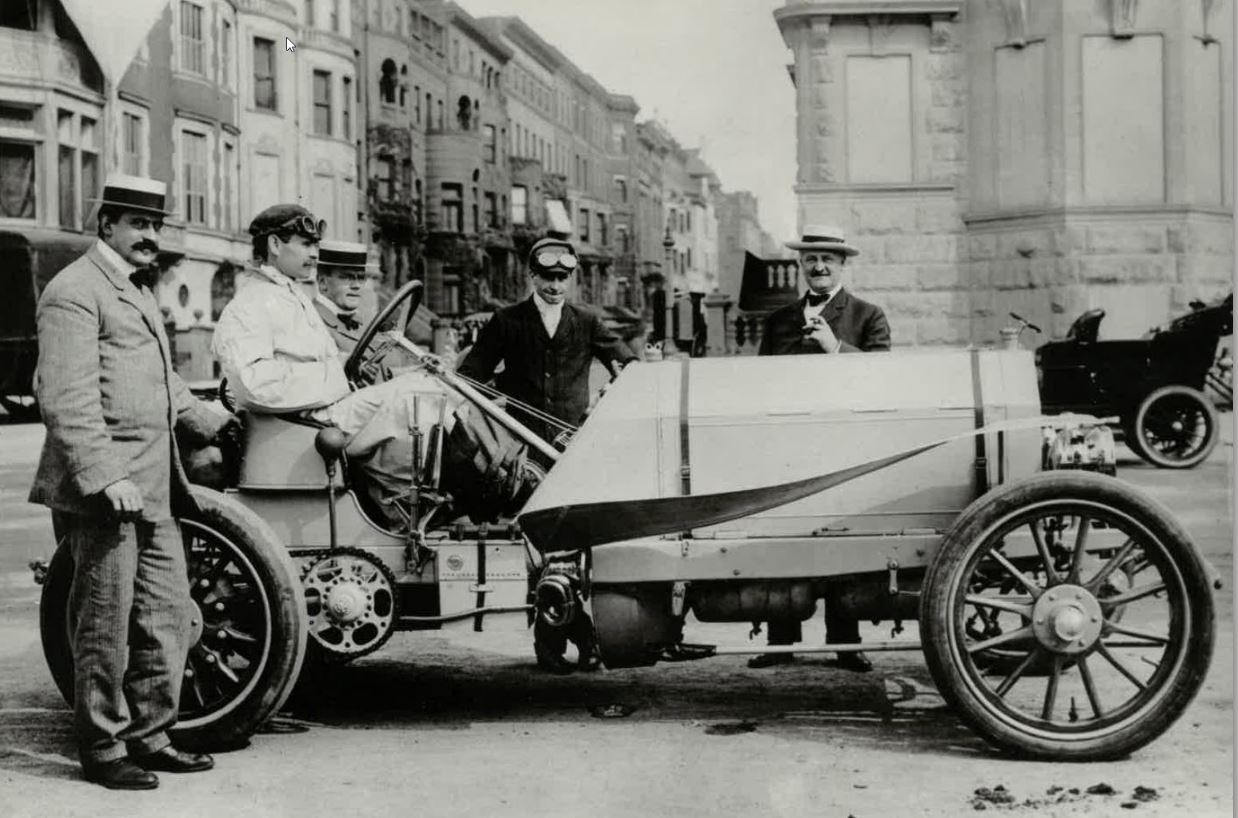
A.L. Riker is seen here at the far left in 1906 with his latest design, the 1906 90 hp Locomobile. Also in the photo is Joe Tracy (driver's seat) and Al Poole (in goggles).
This Locomobile ran as the #12 Locomobile in the 1906 American Elimination trial and #9 Locomobile in the 1906 Vanderbilt Cup. It was modified and ran as the winning #16 Locomobile in the 1908 Vanderbilt Cup Race.
In Part 3, Daimler hits a milestone, the debate rages on and on about a name, Barnum and Bailey and the first outboard boat motor.




Comments
Interesting debate regarding what to call the new invention. It calls to mind a newer invention, the computer. We call it a “computer,” meaning a device that does calculations. The French call it an “ordinateur,” meaning a device that follows orders (the program). Both are appropriate names, but their meanings are different.
Photo of Thomas Edison viewing the races at Eagle Rock in 1903. From “Horseless Age”, 1903. Wonder who the passenger is.
What to call the horseless carriage: As Greg notes above there was disparity between the British and the Americans. In this April, 1907 photo seen in the British publication, “The Sphere”, the American term “automobile” was stilled viewed in low regard across the pond. The caption begins: “The popularity of the automobile, as Americans curiously insist in calling a motor car . . .”. The caption also notes that in NYC (the picture is of Central Park) automobiles have not displaced the popularity of horses.